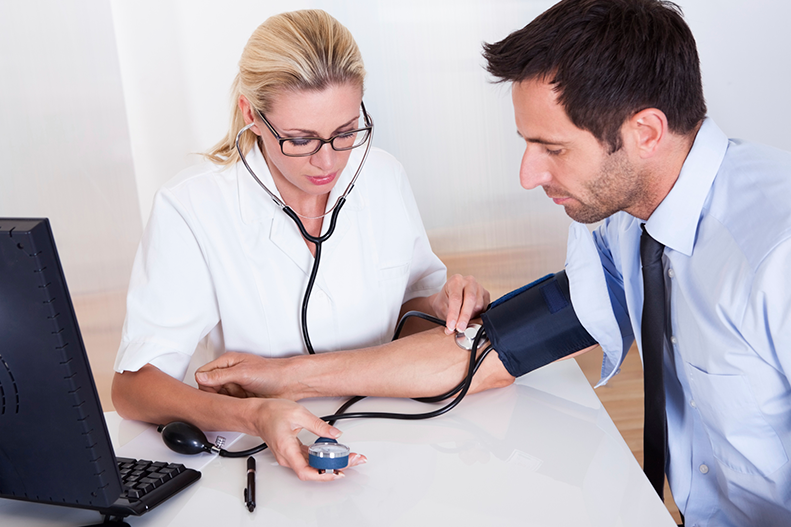6 Tips For Getting Those Greens
6 Tips For Getting Those Greens
Eating dark green vegetables as share of an overall healthy diet prevent prevention May some cancers, Promote heart health, and help to control weight and blood pressure. Dark green vegetables are significant to eat daily, As They contenir dietary fiber, high levels of vitamins A, C, E, and K, and key minerals, like magnesium, potassium, iron and calcium.
Continue to eat Those greens That You already know and love, goal try at least one new Each weekend.
According to the National Cancer Institute, most is Americans are not consuming the recommended daily water equivalent of fruits and vegetables; PARTICULARLY we are lacking in dark greens! Adults entre les ages of 30 and 51 years shoulds consume at least three cups of dark green vegetables every week, in addition to orange-colored --other and vegetables. Women older than 51 years of age need at least two cups of dark greens weekly. Those Who are More Physically Active May be ble to consume more while staying Within calorie needs.
When it comes to dark greens, there are lots of choices! The Following table lists Some dark green vegetables and what counts as one cup Toward your recommended amount.
| Dark Green Vegetable | What counts as one cup of vegetables? |
| Broccoli | 1 cup chopped or florets3 spears 5 "long raw or cooked |
| greens: collards, mustard greends, turnip greens, kale | 1 cup cooked |
| Spinach | 1 cup cooked 2 cups raw is equivalent to 1 cup of vegetables |
| Raw leafy greens: Spinach, romaine, watercress, dark green leafy lettuce, endive, escarole | 2 cups raw is equivalent to 1 cup of vegetables |
Continue to eat Those greens That You already know and love, goal try at least one new Each weekend.
- When you eat dark green vegetables, make sour to add a teaspoon of dietary fat, Such as olive oil, cheese or salad dressing to make sour your body Absorbs all of the vitamins you eat.
- Broccoli can appeal to Both adults and kids! Steam and season with fresh lemon juice, add to stir fry omelets gold, gold enjoy raw broccoli in a salad or with a low-fat dip. Rotate broccoli with dark greens --other Such As bok choy, napa cabbage, collards, watercress, mustard greens gold.
- Arugula, endive, chicory, romaine lettuce and work great in wraps and salads. Add strawberries, nuts, and a vinaigrette dressing for a fresh spring or summer treat.
- Spinach is a powerhouse nutrition! Make a spinach salad with roasted almonds, mandarin oranges or apples, and extra virgin olive oil and garlic. You can sneak spinach in a fruit smoothie for the kids!
- Beet greens are high in potassium and May help to Maintain healthy blood pressure. Swiss chard, beets aussi with the family, Has an impressive list of health-promoting nutrients. Consider using chard in addition to spinach When prepaid vegetarian lasagna.
- Kale, an Excellent source of vitamin K, versatile-it works great in soups is, stews, and side dishes. Try Kale chips: remove leaves from thick stems and tear into "chip" sized rooms, toss with a little olive oil, spread evenly across a baking sheet lined with parchment paper, add a pinch of sea salt and bake in your oven at 350 degrees for 10-15 minutes or up to brown edges.
Some dark green vegetables contenir high levels of oxalates, and in uncommon cases, May be Problematic for Individuals with medical conditions Such as kidney or gallbladder disease. Consult with your doctor prior to making sudden exchange to your diet
. Sources: National Cancer Institute, United States Department of Agriculture, LifeWork Strategies EAP, and Washington and Shady Grove Adventist Hospitals. For medical advice, consult your physician.



 The recommended amount of fruit and vegetables needed generally depends on your age, sex and level of physical activity, but with our busy schedules, monitoring and calculating the exact amount can become a bit tedious. The American Heart Association recommends eating eight or more servings of fruits and vegetables every day. An average adult consumes 2,000 calories per day should aim to 4.5 cups of fruits and vegetables daily. There is a wide selection of foods that fall into these two food groups to add more fruits and vegetables in your meals throughout the day will allow you to consume the recommended amount without realizing it!
The recommended amount of fruit and vegetables needed generally depends on your age, sex and level of physical activity, but with our busy schedules, monitoring and calculating the exact amount can become a bit tedious. The American Heart Association recommends eating eight or more servings of fruits and vegetables every day. An average adult consumes 2,000 calories per day should aim to 4.5 cups of fruits and vegetables daily. There is a wide selection of foods that fall into these two food groups to add more fruits and vegetables in your meals throughout the day will allow you to consume the recommended amount without realizing it! 


